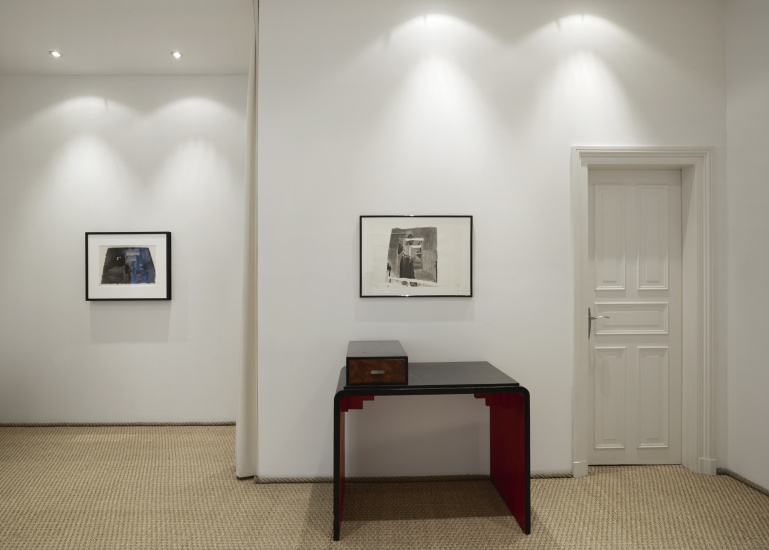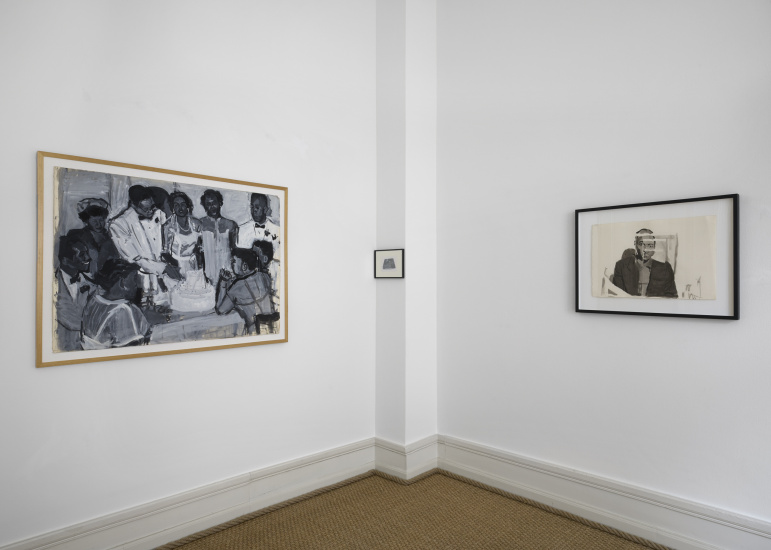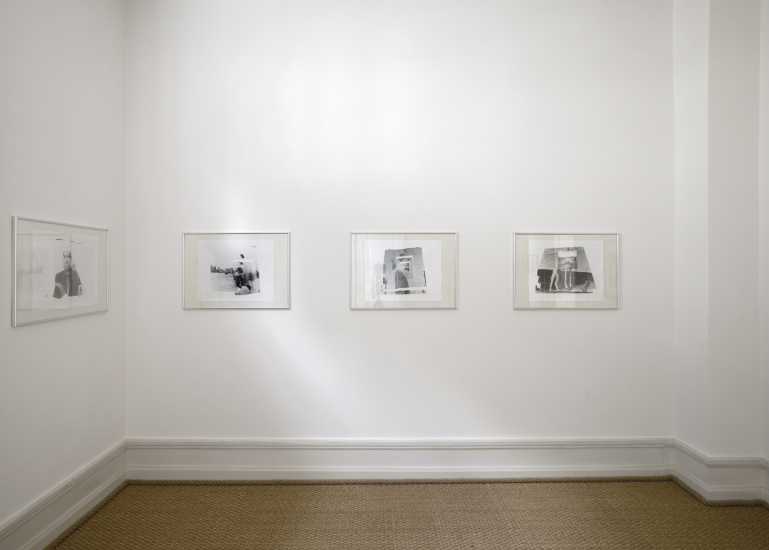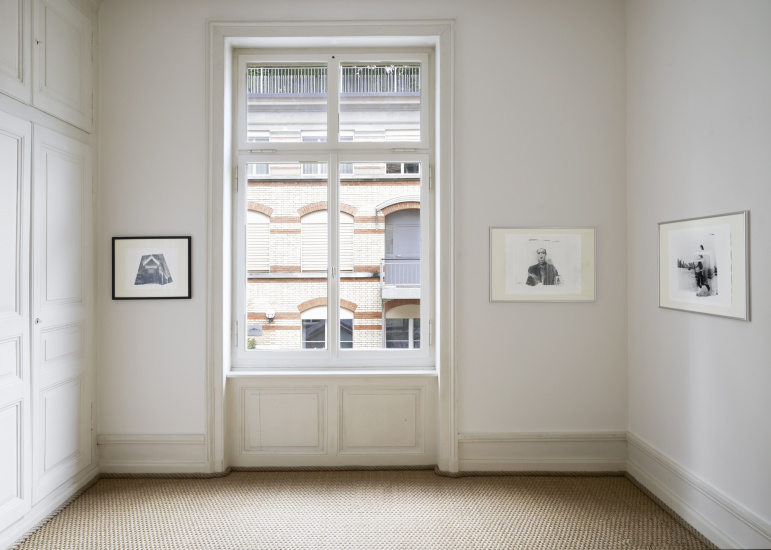Darrel Ellis
10.6. - 15.7.2022

Darrel Ellis, 2022

Darrel Ellis, 2022

Darrel Ellis, 2022

Darrel Ellis, 2022

Darrel Ellis, 2022

Darrel Ellis, 2022

Darrel Ellis, 2022

Darrel Ellis, 2022
Darrel Ellis’s quiet and contemplative work encompasses experimental photography, drawing, and painting. While it is firmly anchored in an explicit commitment to the genres of family photography and portraiture, it subverts the revealing and inviting intent that these genres are associated with in their vernacular expression. Instead, Ellis’s multilayered images are like slippery spectres; they are warped, fragmentary, opaque, and elusive.
Working in the United States in a time of societal and economic volatility which was reflected in structural racism, an anti-gay legal culture, and the terrifying realities of AIDS, Ellis developed a fascination with re-interpreting the photographs of his late father who passed away before Ellis was born in 1958. The late Thomas Ellis was a postal clerk and photographer who, for a time, ran a small portrait studio and whose images depicted his immediate family and the extended Black community in Harlem and the South Bronx in quotidian and peaceful settings. A veteran of the US Marines, Thomas Ellis was tragically killed in 1958 by two plainclothes police officers while his wife was pregnant with Darrel. His father’s violent and untimely death had an enduring influence on Darrel Ellis, leading him to revisit and rework his father’s family photographs in a serial and iterative manner, by gradually appropriating, modifying, animating, or obliterating them.
Bringing a painterly interest in perspective, depth, and dimensionality to photography, Ellis began experimenting with projecting photographs onto disposable sculptural forms and then rephotographing the distortions while he was in residency at PS1 (1979-1980). Around this time, Ellis also began painting and drawing from his father’s printed photographs, resulting in works on paper; such as Untitled (Portrait of Joseph Tansle, Artist’s Great Uncle), ca. 1980-90, or Untitled (Couple Kissing), ca. 1988-91. After his mother subsequently gave him hundreds of negatives shot by his father, Ellis focused on painting them for several years, only returning to his trailblazing rephotography technique in 1987.
Ellis’s rephotography technique was a multistep process for which he constructed rudimentary sculptural reliefs out of cardboard, foam, and plaster, which he would then place on the floor beneath his enlarger to use as a projection surface. After inserting one of his father’s negatives into the enlarger, he would change the position of the relief to adjust the interaction between the projected photograph and the relief’s sculptural qualities. He then photographed the distorted projection from various positions whereby the angle of the camera relative to the relief introduced an additional form of perspectival distortion, creating the striking trapezoidal shape that characterises works such as Untitled (Laure and Mother), ca. 1989-91. In this gelatin silver print, the faces of Darrel’s mother and Laure are obliterated by the geometric shapes of Ellis’s sculptural relief: negative space in the form of empty white circles and squares. Contrary to the organic reliefs, with which he animated or liquified the projected images, the geometric reliefs were intended to deconstruct the images by blocking and nullifying their central elements. About the omissions created in these works, the artist has stated: “You have this strong juxtaposition of this ideal Black family life with all the disjunctions and holes, so, in a way, it’s back to why I use my father’s work: because that’s the raw material I need to talk about, the fact that it’s gone, that it doesn’t exist anymore.”
Indeed, Ellis’s work is so powerful and poignant because its psychic realm–loss, memory, and identity–coincides with its formal articulation via the medium of photography. In his seminal book on photography Camera Lucida (1980), Roland Barthes argues that the photograph not only meditates on spatial indexicality (“I was there”), but also on the inevitability of loss: with every click of the shutter, the present is turned into past (“I was there”). Simultaneously, the photographed instant becomes mechanically reproducible, thus enabling us to repeat what could never be repeated existentially. By re-working his late father’s family photographs and portraits in a serial and iterative manner, Ellis enacted a search for closure. By presenting these images as altered and slippery photographic spectres, his work not only meditates on photography’s affinity to death and time, but simultaneously highlights the fractured and unreliable nature of our memories.
Giorgia von Albertini

